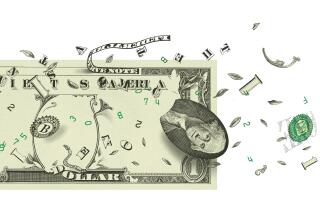Is the U.S. economy in a permanent slump? These economists fear it is
The scariest term that economists have been throwing around lately is âsecular stagnation.â That sounds technical, but itâs easy enough to explain: it means the economy is in a slump that it may never be able to escape.
Itâs one thing to say things will have to get worse before they get better; quite another to say theyâll just keep getting worse. But thatâs the fear expressed by former Treasury Secretary and White House chief economist Lawrence Summers in an essay published last week.
Summers observes that growth in the U.S. and Europe--and projections for future growth--have been dismal and getting worse. (See graph above.) âU.S. economic growth has averaged only 2% over the last five years, despite having started from a highly depressed state,â he writes.
Whatâs worse, he asserts that growth was meager even in the pre-recession period, when it appeared to be quite healthy. But its fundamental sickness was masked by risky financing--âvast erosion of credit standards, the biggest housing bubble in a century, the emergence of substantial budget deficits, and what many criticize as lax monetary and regulatory policies.... It has been close to 20 years since the American economy grew at a healthy pace supported by sustainable finance.â
Summersâ concerns are echoed by a clutch of leading economists--among them Barry Eichengreen of Berkeley and Paul Krugman of Princeton--who contributed to a remarkable volume on secular stagnation published in August by the London-based Centre for Economic Policy Research; the Summers essay appeared as its keynote. The pamphlet is downloadable for free here.
Many of them find that the evidence of secular stagnation is inescapable, though they disagree about its causes and therefore its remedies. The causes include a slowdown of technological advances aiding productivity--electricity and the internal combustion engine are behind us; a slowdown in population growth; a rise in income inequality; and a failure to invest in infrastructure. The latter two get most of the blame, with good reason.
As Eichengreen reflects, âPessimists have been predicting slowing rates of invention and innovation for centuries, and they have been consistently wrong.â Robotics and genomics, he argues, bear as much potential for improving human productivity as the industrial revolution did in the 19th century.
On the other hand, federal spending âdevoted heavily to infrastructure, education and training has been cut to the bone.â
Robert J. Gordon of Northwestern adds that âsalaries for CEOs and celebrities march ever upwards,â while for workers in the lower 90% of income, âcorporations are working overtime to reduce wages, reduce benefits, convert defined benefit pension plans to defined contribution, and to use Obamacare as an excuse to convert full-time jobs to part-time status.... For the disposable (after-tax) incomes of the bottom 99%, it is hard to find any room for growth at all.â
Not all the economists are as pessimistic: Nicholas Crafts of the University of Warwick observes that the term âsecular stagnationâ was coined by economist Alvin Hansen in 1938 as a projection of a permanent post-Depression slump, but his fears turned out to be âthe delusions of a hypochondriac,â proved wrong by World War II and the postwar boom.
Yet Summers and his fellows struggle to find the light. âIt is certainly possible that some major exogenous event will occur,â he writes. âShort of war, it is not obvious what such events might be.â
The greatest reason they find for despair is the failure of government in the U.S. and Europe to respond. Summers writes that improving financial stability, increasing economic output and raising employment require âincreased public investment, reductions in structural barriers to private investment ... a commitment to maintain basic social protections so as to maintain spending power, and measures to reduce inequality and so redistribute income toward those with a higher propensity to spendâ (that is, middle- and lower-income households).
The U.S. is moving away from, not toward, those policies; if the Republicans take the Senate on Tuesday, the prospects for such a program grow dimmer.
All isnât lost, but the future is in our hands. Says Eichengreen: âIf the U.S. experiences secular stagnation, the condition will be self-inflicted.... It is important not to accept secular stagnation, but instead to take steps to avoid it.â
Keep up to date with the Economy Hub. Follow @hiltzikm on Twitter, see our Facebook page, or email [email protected].
More to Read
Inside the business of entertainment
The Wide Shot brings you news, analysis and insights on everything from streaming wars to production â and what it all means for the future.
You may occasionally receive promotional content from the Los Angeles Times.











